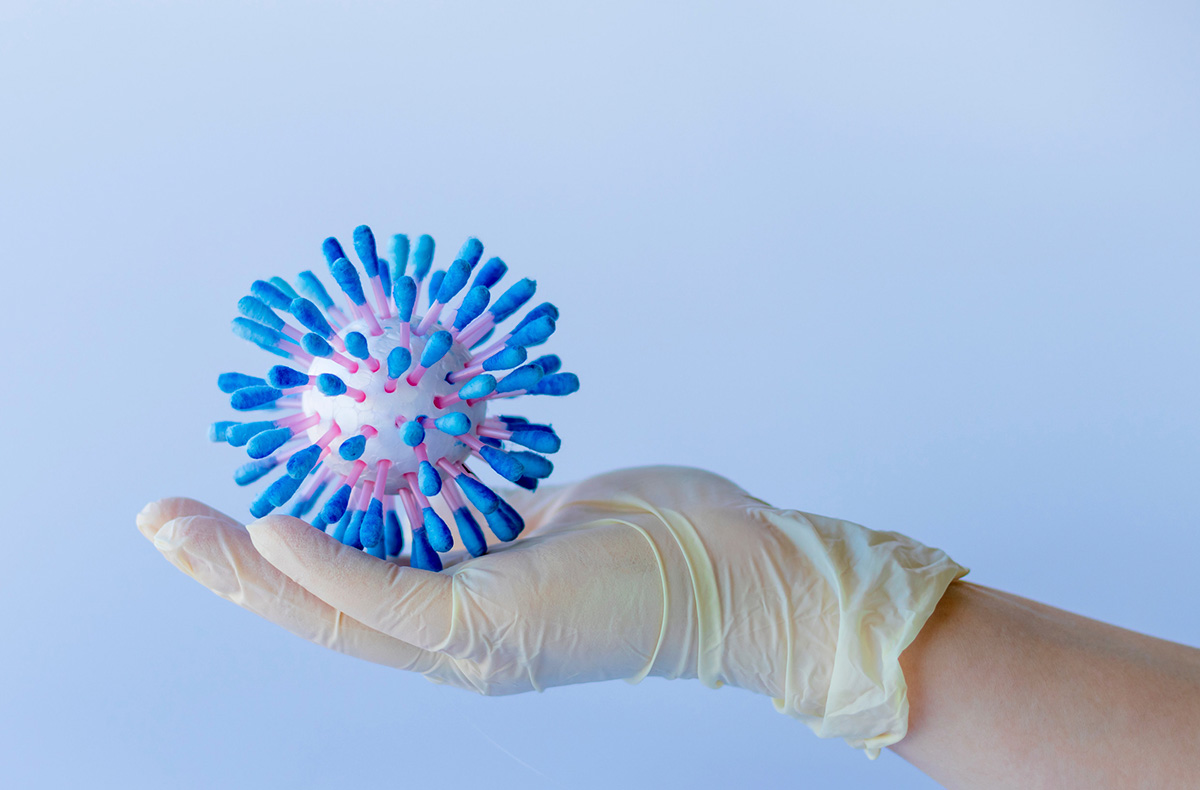The immune system is a collection of organs, cells and molecules found throughout the body. Its best known function is to protect us against infections caused by viruses, bacteria, fungi, parasites and others. However, the immune system has many other very important functions for our body. On the one hand, it is responsible for immunosurveillance, i.e. the ability to detect and eliminate cells that have undergone malignant transformation. And if cancer has already occurred, it helps to fight it. It is also responsible for removing waste or toxic products from tissues and, through inflammation, is involved in repairing damaged tissues after illness or trauma. It is also responsible for guarding our body's borders, including the blood-brain barrier, which separates the central nervous system from the rest of our body. At the level of these barriers, and especially the intestinal barrier, it analyses each substance that passes through to decide whether or not it is allowed into the body. It is also involved in the development of all our organs, from the foetal stage to our old age. This is especially important in the brain, where cells of the immune system (resident and migrated), aided by other local cells called glial cells, are largely responsible for neuronal plasticity. This plasticity is the mechanism by which our brain adapts to our environment, the situations we experience, various requirements and the natural development of the body. Thanks to the action of all these cells, the connections between neurons are modified and specialised, and connections or cells that are not useful are eliminated. Finally, it also plays a very important role as a communication system in our body. Because of its ubiquity and its constant interaction with the external environment, and especially with our microbiota, the immune system is able to keep abreast of everything that is going on inside and outside our body. Thus, by manufacturing different substances (pro- and anti-inflammatory cytokines, peptides, amines and others) and releasing them into the extracellular fluid, blood or lymph, it is able to transmit this information to other parts of the body, especially the central nervous system. It is therefore in constant communication with our brain, but also with our endocrine system, and is influenced by hormone levels. Sex hormones, cortisol (stress hormone), thyroid hormones and others are able to regulate the activity of the immune system. This is why all the endocrine disrupting toxins, which we have discussed in other articles, can play a crucial role in the functioning of our body, and in the development of urinary tract infections, which is the subject of this article.
Introduction to endocrine disruptors
The microbiota is also capable of regulating its function. This is why situations of dysbiosis can profoundly alter our health and our defence against infection, as well as all the other functions of this important system. Other mechanisms by which the activity of our immune system can be affected are sleep, emotional or physical stress, physical exercise and diet, especially if there is a deficit of certain vitamins, trace elements or other nutrients such as vitamin C, vitamin D, vitamin E, vitamin B12, zinc, magnesium, selenium, copper, iron, omega-3 fatty acids, etc.
Bibliography:
Arponen S (2021). Es la microbiota, idiota. Alienta.
Godaly G, Ambite I, Svanborg C. Innate immunity and genetic determinants of urinary tract infection susceptibility. Curr Opin Infect Dis. 2015 Feb;28(1):88-96.
Lacerda Mariano L, Ingersoll MA. Bladder resident macrophages: Mucosal sentinels. Cell Immunol. 2018 Aug;330:136-141.
Song J, Abraham SN. TLR-mediated immune responses in the urinary tract. Curr Opin Microbiol. 2008 Feb;11(1):66-73.
Becknell B, Ching C, Spencer JD. The Responses of the Ribonuclease A Superfamily to Urinary Tract Infection. Front Immunol. 2019 Nov 29;10:2786.
Steigedal M, Marstad A, Haug M, Damås JK, Strong RK, et al. Lipocalin 2 imparts selective pressure on bacterial growth in the bladder and is elevated in women with urinary tract infection. J Immunol. 2014 Dec 15;193(12):6081-9.
Ueda N, Kondo M, Takezawa K, Kiuchi H, Sekii Y, et al. Bladder urothelium converts bacterial lipopolysaccharide information into neural signaling via an ATP-mediated pathway to enhance the micturition reflex for rapid defense. Sci Rep. 2020 Dec 3;10(1):21167.
Hayes BW, Abraham SN. Innate Immune Responses to Bladder Infection. Microbiol Spectr. 2016 Dec;4(6):10.1128/microbiolspec.UTI-0024-2016.
O’Brien VP, Hannan TJ, Schaeffer AJ, Hultgren SJ. Are you experienced? Understanding bladder innate immunity in the context of recurrent urinary tract infection. Curr Opin Infect Dis. 2015 Feb;28(1):97-105.
Huang J, Fu L, Huang J, Zhao J, Zhang X, et al. Group 3 Innate Lymphoid Cells Protect the Host from the Uropathogenic Escherichia coli Infection in the Bladder. Adv Sci (Weinh). 2022 Feb;9(6):e2103303.
Wu J, Abraham SN. The Roles of T cells in Bladder Pathologies. Trends Immunol. 2021 Mar;42(3):248-260.
Billips BK, Schaeffer AJ, Klumpp DJ. Molecular basis of uropathogenic Escherichia coli evasion of the innate immune response in the bladder. Infect Immun. 2008 Sep;76(9):3891-900.
Nielsen KL, Stegger M, Kiil K, Godfrey PA, Feldgarden M, Lilje B, Andersen PS, Frimodt-Møller N. Whole-genome comparison of urinary pathogenic Escherichia coli and faecal isolates of UTI patients and healthy controls. Int J Med Microbiol. 2017 Dec;307(8):497-507.
Ambite I, Butler D, Wan MLY, Rosenblad T, Tran TH, Chao SM, Svanborg C. Molecular determinants of disease severity in urinary tract infection. Nat Rev Urol. 2021 Aug;18(8):468-486.
Ziegler T, Jacobsohn N, Fünfstück R. Correlation between blood group phenotype and virulence properties of Escherichia coli in patients with chronic urinary tract infection. Int J Antimicrob Agents. 2004 Sep;24 Suppl 1:S70-5.
Sulaiman KA, Al Qahtani N, Al Muqrin M, Al Dossari M, Al Wabel A, et al. The correlation between non-O blood group type and recurrent catheter-associated urinary tract infections in critically ill patients: A retrospective study. J Int Med Res. 2022 Jul;50(7):3000605221108082.
Albracht CD, Hreha TN, Hunstad DA. Sex effects in pyelonephritis. Pediatr Nephrol. 2021 Mar;36(3):507-515.
Wnorowska U, Piktel E, Deptuła P, Wollny T, Król G, et al. Ceragenin CSA-13 displays high antibacterial efficiency in a mouse model of urinary tract infection. Sci Rep. 2022 Nov 10;12(1):19164.

